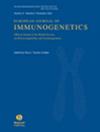Association of HLA-G 14-bp Insertion/Deletion Polymorphism With Recurrent Spontaneous Abortion: A Meta-Analysis
Abstract
We performed a meta-analysis to study the relationship between HLA-G 14-bp insertion/deletion polymorphism and recurrent spontaneous abortion (RSA). All literature was searched from PubMed, Web of Science, Embase and Wanfang databases. Statistical analyses were performed by the STATA software (Version 16.0). A total of 35 studies were analysed which included 3652 women with RSA and 3331 normal control subjects. The current meta-analysis revealed that 14-bp insertion/deletion polymorphism has a significant association with RSA (I vs. D: OR: 1.17; 95% CI (1.05–1.30); II + ID vs. DD: OR: 1.33; 95% CI (1.11–1.59); II vs. DD: OR: 1.34; 95% CI (1.07–1.66); ID vs. DD: OR: 1.30; 95% CI (1.08–1.58)). Subgroup analysis by the number of abortions indicated that there was no significant association between HLA-G 14-bp insertion/deletion polymorphism and RSA risk in women with two or more abortions. However, HLA-G 14-bp insertion/deletion polymorphism was associated with the risk of RSA in women with three or more abortions as well as the overall population (I vs. D: OR: 1.26; 95% CI (1.04–1.52); II + ID vs. DD: OR: 1.47; 95% CI (1.09–1.98); II vs. DD: OR: 1.52; 95% CI (1.08–2.13); ID vs. DD: OR: 1.45; 95% CI (1.06–1.99)). Subgroup analysis by ethnicity indicated that HLA-G 14-bp insertion/deletion polymorphism increased RSA risk in both Asian ancestry group (II + ID vs. DD: OR: 1.35; 95% CI (1.06–1.73); ID vs. DD: OR: 1.37; 95% CI (1.06–1.78)) and European ancestry group (I vs. D: OR: 1.25; 95% CI (1.08–1.45); II vs. ID + DD: OR: 1.48; 95% CI (1.14–1.91); II vs. DD: OR: 1.61; 95% CI (1.19–2.18)). A pOR value of < 0.05 was considered statistically significant for these analyses. Our current meta-analysis demonstrated that the HLA-G 14-bp insertion/deletion polymorphism increased the risk of RSA in Asian ancestry group and European ancestry group.

 求助内容:
求助内容: 应助结果提醒方式:
应助结果提醒方式:


